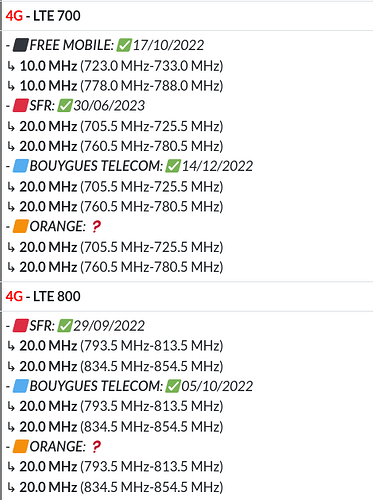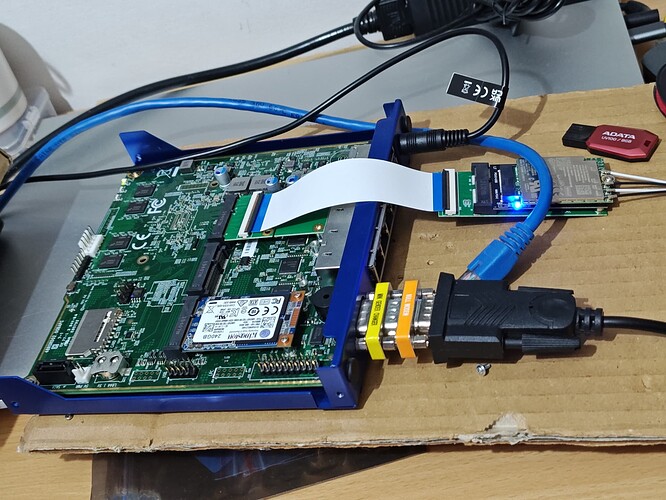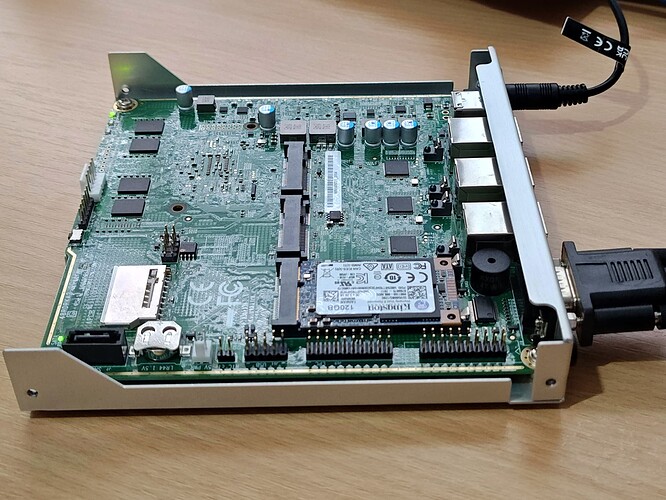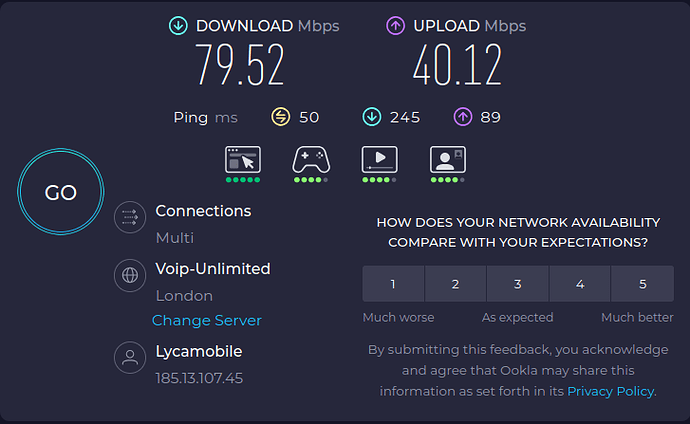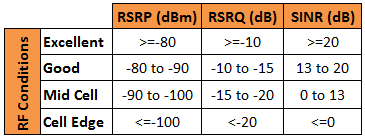Absolutely.
It’s more the next level of detail that I’m struggling to understand in more detail. LTE uses OFDM which seems straightforward enough (though the detailed maths is beyond me) - the carriers are more widely spaced than DSL (15kHz vs 4 IIRC) and the symbol rate correspondingly higher (15k symbols per sec).
The available resources also say that with allowance for guard bands there are 1200 carriers in a 20Mhz band (4G defines bands from 1.4MHz to 20MHz wide).
I’m also fairly au fait with how QAM constellations work though TBH I can’t quite figure out if the later revisions of 4G go above 256 QAM, nor quite where the boundary lies between LTE and LTE-A (4G+, 4.5G or 4.9G depending on the reference).
So the bit rate for a single 20MHz channel should be 1200x15000x8 (as 256QAM is 8 bits per symbol) - which is 144Mbps - manifestly not any of the data rates that are listed.
So I was working on the assumption that ECC takes us to ~ 75 Mbps and then MMIO and carrier aggregation beef it up again - though I can’t see how you get 3Gbps (or higher) which is the top (theoretical) performance of 4G technologies.
I thought that was diversity, rather than MMIO as the latter offers a total bandwidth of No of streams x capacity of each. Theoretically anyway.
On the face of it MMIO seems straightforward - radiate two (or more) signals from two (or more) antennae to two (or more) antennae at the receiving end(s). Then separate them out again despite the fact that they are at the same frequency use the same modulation and occupy more or less the same airspace (but potentially with multiple paths between transmitter and receiver). The maths is so far above my head that it might as well be in orbit so I just accept that one works by magic.
It does beg the question though - if two (or more) people are connected to the same tower using the same band, how many of them can get full bandwidth. There’s an RF quart in a pint pot somewhere but I honestly don’t know if it’s a quart, half a gallon or a gallon in the same 20Oz container.
From the cell mapper I have this for the local tower:
Though I think the info for Free is wrong - from one of the “LTE stats” type apps on the phone I have seen Free using B28 and (on a different occasion) B20 and the phone claiming a 20MHz channel each time, also when it uses B28 the EARFCN is exactly the same (9335 for D/L centred on 770.5MHz) as Orange, SFR or Bouygues on the same channel. I haven’t seen a connection to Orange, SFR or Bouygues on B20.
Yes, except a different and more straightforward version of “more pipes” than MMIO - the fact that the tower supports just one 20MHz channel in each of B20 & B28 suggests that it can’t do “in band” aggregation but might be able to do “out of band” aggregation.
So the answer to “what speed can I get under ideal circumstances” seems to be, er, complex.
Thoughts in my head at the moment include an external antenna as that should optimise the signal and perhaps actually getting two SIMs (as I have spare modems) and bonding the connections either through my network in the UK or via the dedicated server that I rent, which is physically in France and has an unmetered 300Mbps allowance so plenty to bond two LTE connections.
PS apologies to anyone for who the above is acronym soup ![]()
